Doubts persist both in India and the United States on the substance of their strategic partnership. High-sounding declarations about the partnership being one of the defining ones of the 21st century, or one between “natural allies,” have not erased uncertainties in the two countries about the capacity and willingness of each side to meet the expectations of the other.
Growing India-U.S. convergence on several issues has not eliminated significant divergences emanating from huge disparity in power, different priorities, conflicting regional interests and differing views on structures of global governance. India has moved from distrust to positive engagement and greater acceptance of basic U.S. goodwill towards it. The U.S. is devoting higher attention to India than ever before in recognition of its growing international importance. But this improved atmosphere in bilateral relations is not sufficient for ironing out real differences.
Wide Gaps
While there is like-mindedness on issues of democracy, pluralism, human rights, economic liberalisation, terrorism, religious extremism, non-proliferation and the like, their treatment in concrete situations exposes wide gaps in the thinking of the two countries. India notes the selective manner in which “universal values” are promoted, sparing friends who spurn them and sanctioning adversaries for similar repudiation. Even in the case of terrorism, the conduct of some is condoned while that of others invokes steps to bring about regime change.
On Pakistan, Afghanistan, Iran, Syria, Climate Change, the Doha Round, sovereignty issues, global governance, etc., India and the U.S. have different perspectives. While differences between the U.S. and some of its allies on important issues do not call into question the basic assumptions about their mutual relationship within an alliance system, in India’s case the “strategic relationship” gets stress-tested in public opinion each time the two countries are in discord.
Our strategic partnership with the U.S. cannot presume identity of views on contentious international issues or adjustment of Indian policies to suit American preferences alone. Yet, when India speaks of strategic autonomy, U.S. votaries and Indian champions of a strong India-U.S. friendship decry such thinking as mired in India’s defunct nonaligned credo. If the Indian Parliament passes a nuclear liability law imposing supplier liability on nuclear vendors, particularly after Fukushima, U.S. and Indian strategic affairs specialists become petulant. Similarly, if U.S. companies are excluded from defence contracts, there is interrogation about India’s commitment to a strategic partnership with the U.S. Elements in India characterise genuine policy differences as fence-sitting, reluctance to accept burden-sharing in upholding the international order and free-loading by India on the back of those powers who make hard choices, sometimes at the cost of their own immediate interest, to maintain peace and security.
Recurrent doubts in India about the quality of its U.S. relationship are fuelled by the inconsistency, lack of steadiness and even transparency of U.S. policies. The U.S. can change gears to suit its interests at a particular juncture, shaped by electoral considerations or lobbying. It is adept at giving varying spins to its policies as circumstances demand. The U.S. policy towards Pakistan, despite its terrorist affiliations and disruptive role in Afghanistan, exemplifies this. Washington’s military and economic aid to Islamabad continues despite Pakistan’s complicity in sheltering Osama bin Laden. Notwithstanding Pakistan’s abetment of terrorism in India and the strategic headaches it causes to the U.S., the American tendency to equate India and Pakistan resurfaces from time to time.
On Afghanistan, the U.S. first questioned India’s role there, then supported it and is now disregarding India’s fundamental strategic doubts about politically rehabilitating the Taliban by dialoguing with it. The U.S. now seems open even to the Haqqani network’s participation in the political end-game in Afghanistan. On China, the signals waver, with the declaration of a pivot towards Asia with China’s rise in mind, which is then diluted to “re-balancing” detached from China-related fears and, finally, the wisdom of any beefed-up Asia-Pacific policy is questioned by the would-be U.S. Secretary of State.
US Secretary of State John Kerry’s visit in June for the fourth round of the strategic dialogue illustrated these cross-currents moulding the India-U.S. strategic partnership. The joint statement issued on the occasion omits any mention of Pakistan, even in the context of the Mumbai attack. The references to terrorism and “violent extremism” and to dismantling of terrorist safe havens in the region are worded to avoid finger-pointing at Pakistan. There being no risk of any other political force being excluded by design or choice, the reference to “inclusive” Presidential and Provincial elections in Afghanistan in 2014 is puzzling, as it suggests that India too is advocating the “inclusion” of Taliban in these elections. The rhetoric about the reconciliation process being Afghan-led and Afghan-owned sounds hollower with the U.S. decision to talk directly to the Taliban at Doha, as Kabul will not dictate the negotiating script to Washington. The red lines drawn by the international community for any deal with the Taliban have been blurred in the joint statement which speaks in general terms about preserving “the historic political, economic and social progress made over the last decade,” though in Kerry’s speech at the Habitat Centre these red lines are reiterated. It is not clear how India’s External Affairs Minister Salman Khurshid could say in his joint press conference with Kerry that the U.S. “will ensure that none of the concerns of India is overlooked or undermined,” when the very act of talking to the Taliban under Pakistan Army Chief General Ashfaq Parvez Kayani’s benign oversight subverts India’s interests.
The joint statement omits any mention of China, the South China Sea or U.S. “re-balancing” towards Asia, though Kerry affirmed in his press statement that the U.S. leadership considered India a key part of such a re-balance. There is only a general reference — in the paragraph dealing with the Indian Ocean and the Arctic Council — to maritime security, unimpeded commerce and freedom of navigation! Iran and Syria are absent from the statement. The India-U.S. strategic dialogue thus ignores or obfuscates key strategic issues.
Arm-Twisting
Kerry pushed India unreasonably on the civilian nuclear front by unilaterally affirming in the joint press conference with Khurshid — beyond the joint statement’s non-committal language — that the two sides had agreed that a commercial agreement between Westinghouse and the Nuclear Power Corporation of India should be reached by September this year. This is hardly possible when highly complex issues such as capital investment, financial mechanisms and the per-unit tariff rate have to be finalised, besides meeting other regulatory requirements. Is Kerry suggesting that the “full and timely implementation of the civil nuclear deal” requires India to hasten the finalisation of nuclear contracts with U.S. firms, irrespective of any consideration? Perhaps this arm-twisting is related to the Prime Minister’s expected visit to Washington in September.
The extraordinary emphasis on climate change issues by Kerry during his visit unnecessarily risks converting a complex global issue into a contentious bilateral one. Kerry waxed eloquent on the new energy market being the “biggest market ever seen on earth ... a $6 trillion market with 4 billion users,” suggesting powerful commercial considerations behind his push. The wisdom of creating a working group headed by Kerry and Khurshid to intensify bilateral efforts to address “forcefully” this “urgent” issue — which means increasing the weight of non-technical foreign policy considerations into bilateral discussions — is questionable.
Positive features were, of course, not missing from Kerry’s visit, given the much improved tenor of India-U.S. ties and the extraordinarily rich agenda of bilateral cooperation which in many unspectacular ways can be productive for India. The short point is that the cogs of the strategic partnership still grate with each other and the machine is not adequately lubricated yet by the diplomatic grease of coherence, clarity, balance of interests and a sense of true partnership.
Published Date: 22nd July 2013, Image Source: http://www.american.com


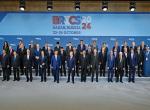

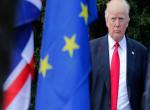
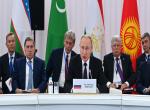
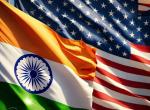
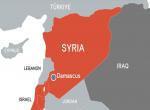
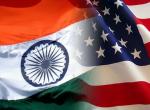
Post new comment